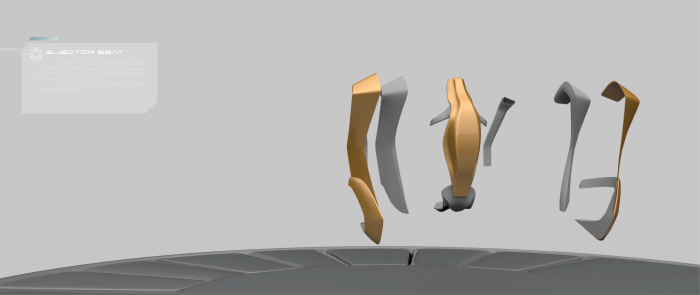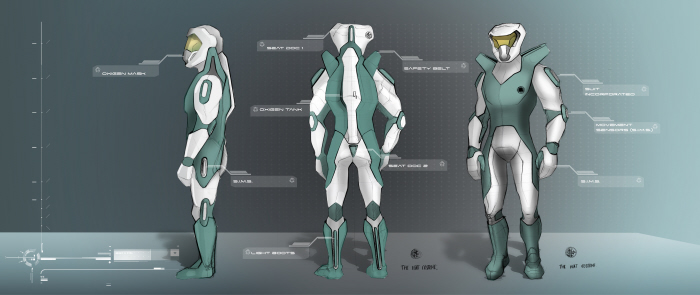
How many times have you been dreaming as a child that you run and after a few steps your body detaches off the ground and floats into the air?

Most of the leisure activities we cultivate today have deep roots into humankind`s history and are still confined to land.

The history of hovering has been inspired by the great comic books sci-fi stories and was illustrated through Star Wars flying vehicles, which have been later translated into jetpacks and hovering bikes.

The biomechanical applied engineering of sky jumping describes at best how the human body balances while in the air. The person runs through all the motions implied in the use of this vehicle: take off, stance, weight shift, and preparation for landing.

A designer should always open nature`s inspiration box and use biomimicry as a platform. Insect flight, hovering, and form studies have been part of the background process.

The goals and wishes for this project: an intuitive way of controlling the vehicle, a safer and sustainable new way of transportation with the ability to blend into nature.

Looking into the man-machine bound and seek where the human ends and where the machine starts.

The core of the design is this ejector seat, which has soft padded interior, to warmly welcome the human, but also provide safety through the hard, protective outer shells.

From the side view, we can observe the big bump in the back, containing a life securing element: the parachute, that would be expelled in case of malfunction.

The main inspiration for that was the sleek body of the dragon fly. In combination with my ejector seat core, the final result started to reveal itsef.

key sketch. It has the stance of a dragonfly, it holds and protects even more the driver, providing also sideways protection, under the enveloping shape of the arm kinetics, which are a key element into steering the vehicle.


At this point I had realised how inportant is to emphasize the lines of the vehicle from the top view as well. I wanted to exphasize how the body of the vehicle and the side panels and arm kinetics protect the fragile interior, which beholds the human.





As we recap a bit on the subject, we can see the beautiful golden colors originating from the 70’s Lotus Esprit, used here in the seat elements in subtle accents.
Continue further on, to see how the vehicle is being built.

As parts appear in the picture you can see the main lightweight body of the vehicle which contains all the techical parts: the Li-air batteries, which have the space to breath, the gyroscope stabilizer which detects the balance of the vehicle and helps stabilize the posture while in the air.
For that extra bit of energy, the vehicle is coated with photovoltaic Lotus Golden paint, which charges directly from the Sun and redirects the energy to the engine.

As we move further on, the protective side panels, coated with the same photovoltaic paint and the arm kinetics join the picture.
We can observe the split line between the arm kinetics, which provide motion freedom to the arms, which play a crucial role into steering this vehicle.

Further, the vehicle is controlled with the intuitive motions of the human body through arm kinetics and exoskeleton parts.

The running sequence resembles that the dream inspiration is still alive in the project.

In order to gain altitude, the user of this vehicle has to move its feets along with the exoskeleton parts, which hold them.
Most probably, at first, users would need to run in a controlled loop in order to
get more accustomed to the natural way of controlling it.

Final poster at the UID`13 graduation exhibition

Character design sketch.

The adventure seeker is outfitted with a special suit which connects him/her to the ejector seat, equipped with emergency parachute and oxygen mask, capable of securing safe landing in hazardous situations.

Early storyboard sketch.
gLike